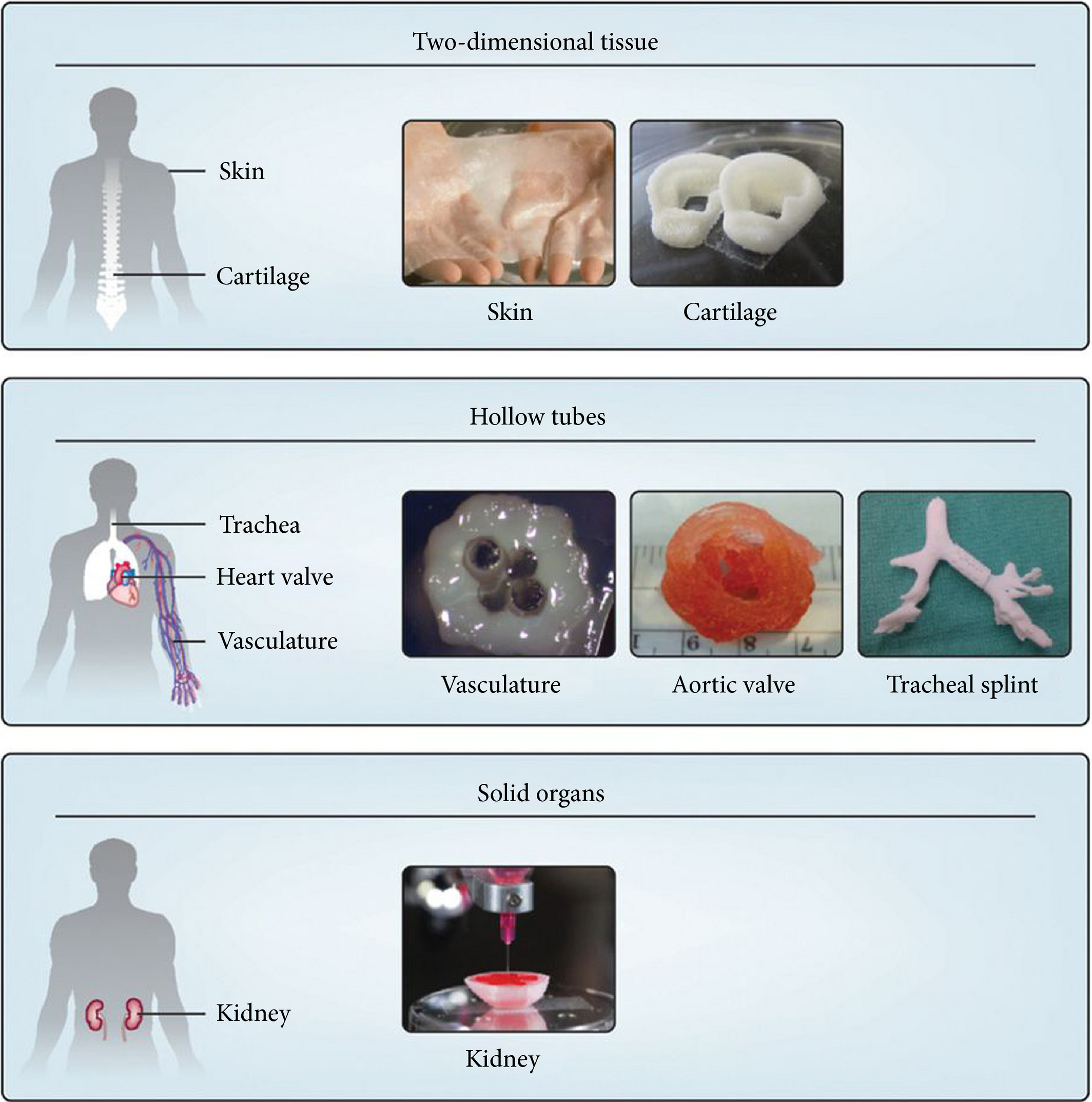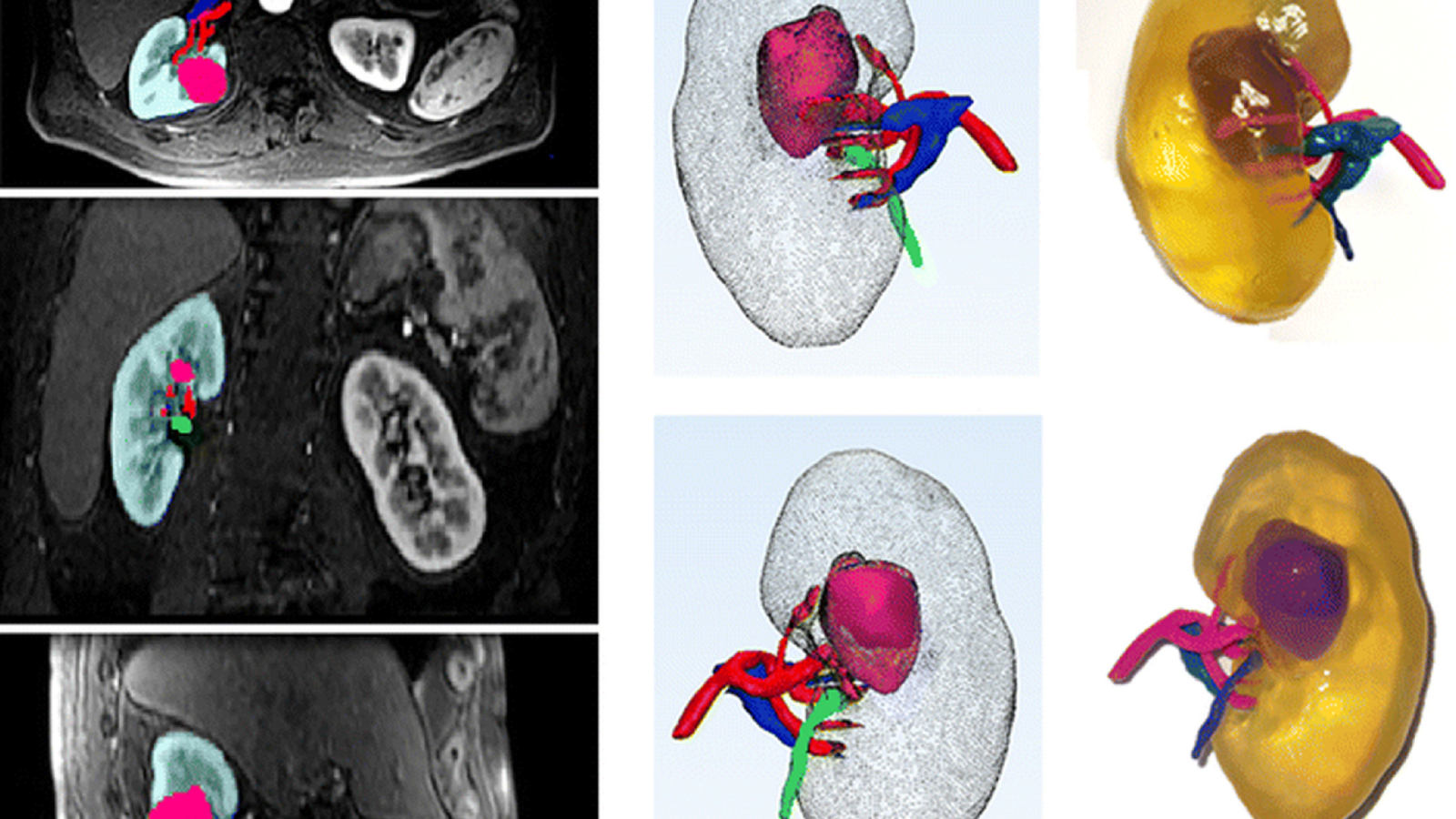Since its inception in the 80s, 3D printing has managed to find itself in more industries and fields than we can count. One such area is urology – the medical field concerned with the urinary-tract system. A recent literature review published in BJU International covers the latest developments and accomplishments of researchers employing 3D printing to push urinary medicine past its limits.
Education and surgical planning
2D and 3D anatomy scans can be used to create a precise, personalized model of a patient’s organ. This model can then be sliced and a low-cost print can be fabricated in-house by the medical personnel. Looking at 3D printed kidney models, Knoedler et al. attempted to use 3D printing to improve medical students’ understanding and accuracy when diagnosing malignant tumors. A set of first-year medical students were given CT scans and 3D printed models of cancerous kidneys as resources. When asked to diagnose the kidneys with the help of the 3D printed models, the researchers found that the assessments improved in three of four metrics of the R.E.N.A.L. nephrometry score when compared to CT scans alone (radius, nearness to collecting system, and location).
Similarly, Ebbing et al. used 3D printed models of cancerous prostates to help medical students precisely locate tumors. When using MRI alone, the difference in accuracy between the students and experts was 47%. This dropped significantly to 17% when the students had access to 3D printing.

Urological equipment
To supplement the polymer models of organs, 3D printing can also be used to manufacture medical equipment for urological procedures. Park et al. successfully prototyped and tested a set of additively manufactured resin flap valves measuring only 2.8 x 5.3mm. The valves were attached to a ureteric stent – a thin tube designed to prevent the obstruction of urine flow – and were successful in preventing reflux, or backflow, in an experimental environment. The researchers would like to develop their method further and hope to see it applied in a real clinical setting.
3D Bioprinting
Manufacturing on Demand
Perhaps the coolest of the applications (and unfortunately the least developed) is the 3D bioprinting of actual cell cultures for transplantation, although the successful fabrication of any surgery-ready major organs is yet to be realized. Making major strides in that direction, Kumar et al. managed to 3D print kidney micro-organoids – an economical source of kidney cells. With a number of developments to the technology and perhaps a change in environment (like the ISS), we could potentially see whole 3D printed replacement organs become an option in the coming decades.

Further details of the applications of 3D printing in the field of urology can be found in the literature review titled ‘Current applications of three‐dimensional printing in urology’. It is co-authored by Michael Y. Chen, Jacob Skewes, Mathilde Desselle, Cynthia Wong, Maria A. Woodruff, Prokar Dasgupta, and Nicholas J. Rukin.
Urology is not the only aspect of medicine to have benefitted from additive manufacturing. At Tsinghua University, Beijing, researchers have 3D printed a personalized cervix tissue implant to counteract human papillomavirus (HPV). The porous implant was loaded with anti-HPV proteins and was seen to encourage tissue regrowth while inhibiting the spread of the virus. Elsewhere, in Korea, researchers have 3D printed a wearable medical biosensor for personalized health monitoring. So far, the creators have used the device to conduct sleep studies and measure the electrical activity in muscles during exercise.
* This article is reprinted from 3D Printing Industry. If you are involved in infringement, please contact us to delete it.
Author: Kubi Sertoglu


Leave A Comment